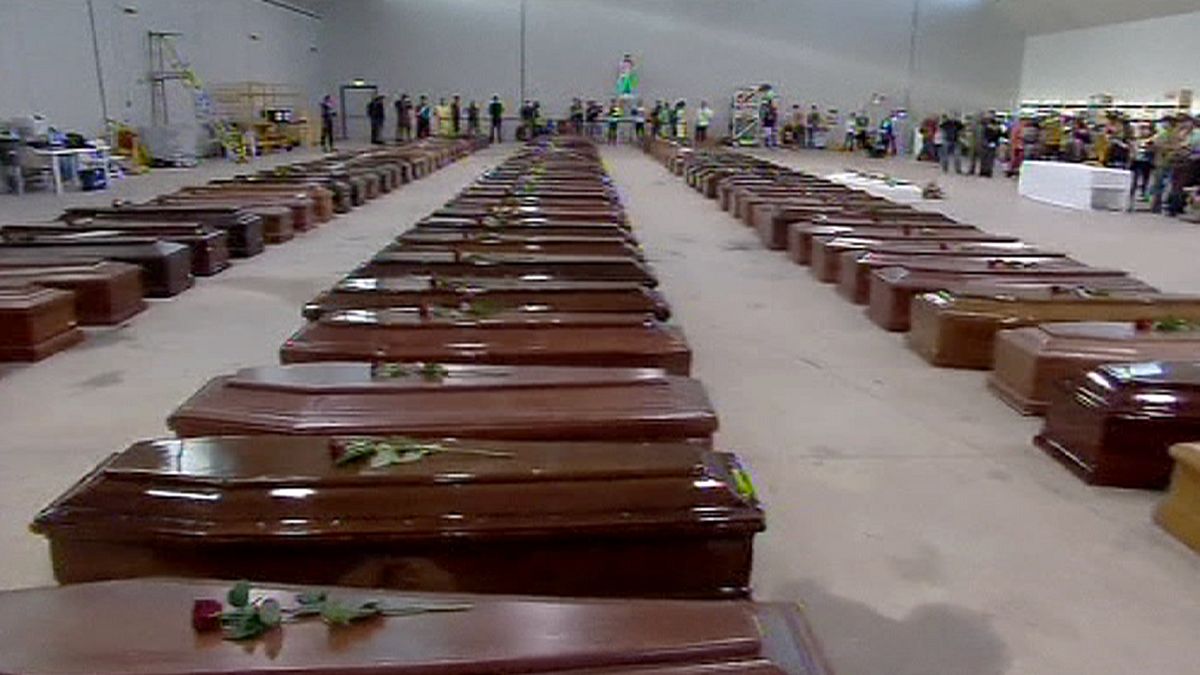In October 2013, images of 111 coffins, four containing children, shocked the world. They were lined up in a shed on the Italian island of Lampedusa
In October 2013, images of 111 coffins, four containing children, shocked the world. They were lined up in a shed on the Italian island of Lampedusa.
Since that date, Europe has not been able to cope with a humanitarian crisis that has continued to grow in scale.
At dawn on October 3, 2013, 368 migrants en route from Libya drowned near to the island.
But the drama did stir some to act. Fisherman, Vito Fiorino, says he was able to rescue some people from the water.
“We started sailing out there and the scene was dramatic. There were all these people with their arms raised, crying out for help. At that point, we immediately called the port and we quickly started pulling these people onto the boat. We managed to pick up 47 people.”
Mare Nostrum operation
Confronted head on with the situation, Italy reacted and put in place the Mare Nostrum rescue operation. A 900-strong force, led by the Italian navy, succeeded in saving 170,000 lives in the 13 months during which the operation was running.
But by the time it was replaced, it had cost the Italian government 117 million euros.
Frontex: Triton
Frontex took over on October 31, 2014, with a sea border patrol mission called Triton. It operates in a smaller area, in the Sicilian Canal. Unlike Mare Nostrum, it is not a rescue operation, and it receives much less funding.
Italian-led Mare Nostrum cost 9.3 million euros per month, while just 2.9 million is spent on Triton monthly.
A further difference: Mare Nostrum approached the Libyan coastline, when necessary. Triton is limited to the 30 nautical miles around the islands of Sicily, Lampedusa and Malta.
Hedinn Halldorsson spoke on behalf of the charity Save The Children.
“Since Mare Nostrum stopped and since Frontex started you have seen a rise in the numbers of refugees coming,” he said. “Even though most of them know that Mare Nostrum was not in place and that they could not count on being saved after leaving Libya for instance.”
Cyprus
It seems impossible to stop the journey of hope for those who have no other choice.
On September 26, 2014, a trawler containing 345 Syrian refugees, was rescued by a cruise ship near Cyprus.
According to Amnesty International, in 2014, 25 percent of lives saved in the sea were thanks to the efforts of commercial vessels, in spite of the risks entailed. Now many ships are said to be changing routes, due to repeated requests for help.
